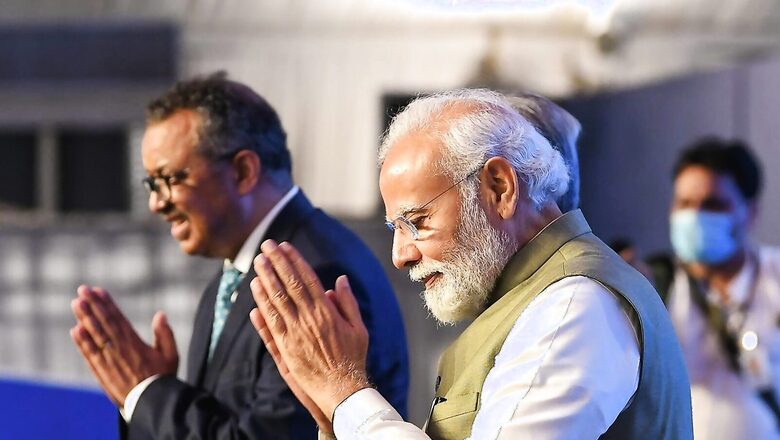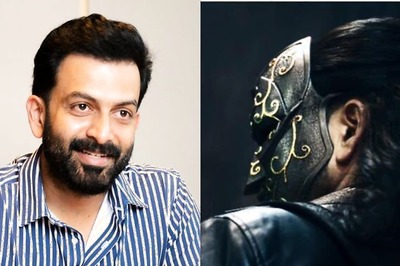
views
The news of the Prime Minister laying the foundation stone of the Global Centre for Traditional Medicine set off a volley of questions. Why Gujarat? Why Jamnagar? Why was Dr Tedros, the Director-General of WHO, only associated until now with the pandemic, extolling the virtues of traditional medicine?
As a one-time Secretary of Ayush (albeit nearly 20 years ago), I was happy to hear that the foundation stone of the global centre had been laid and an investment of $250 million (nearly Rs 2000 crore) assured by India. When I headed the department, Geneva-headquartered World Health Organisation had done little beyond paying lip service to traditional medicine. Without credibility, how could the strengths of India’s centuries-old empirical medical knowledge and even its treasure house of home remedies be disseminated globally?
Which other country in the world had universities, colleges, national institutes, more than 700,000 practitioners and a wide range of drug companies devoted exclusively to Ayurveda, Unani, Siddha preventive and curative treatment? Which other country promoted Yoga and Naturopathy not just for well-being but also for healing? Where else were there pharmacopoeias and laws governing good manufacturing practice and drug testing? For decades only Chinese medicine had dominated the traditional medicine division of WHO, Geneva and Ayurveda with all its codified texts and millennia-old wisdom was relegated to herbalism!
My frustration over being thus ignored was shared by late Professor Ranjit Roy Chaudhary, a renowned clinical pharmacologist and a friend of traditional medicine. He understood the potential and effectiveness of plant-based formulations and stressed the need to establish an inter-country Traditional Medicine Council which could become a clearing house for the most effective therapies still in use regionally. With his long exposure to WHO, he felt there was a need to involve countries like Indonesia, Sri Lanka, Nepal, DPR Korea and even Thailand, to share the knowledge and experience of documented Asian health outcomes.
The challenges ahead were insurmountable despite political support and enthusiasm. Concerns about safety, efficacy, raw drug purity, toxicity and the lack of standardisation derailed any mention of even unexpected therapeutic outcomes. Having travelled across the country, first as Secretary and years later as a report writer on the operative characteristics of the Ayurveda, Unani and Siddha systems, I had witnessed the relief people were getting from a range of treatments offered; for example, reducing chronic back and joint pain and intractable skin problems, mitigating long-term metabolic conditions, even reducing the impact of paralysis and impaired mental health. But my observations and recommendations were shelved, like so many reports. I was also perceived as a renegade — after spending 10 years in handling public health and hospitals, now espousing unproven systems and overlooking unfounded claims made by Ayush practitioners claiming miracle cures! In such a climate, going international was next to impossible.
And finally, why Gujarat and why Jamnagar make sense, but some history bears re-telling. Jamnagar was once the capital of the princely state of Nawanagar, situated on the north-western side of the Kathiawar peninsula. In the 1940s Dr P.M. Mehta, the court physician (himself trained in western medicine), had proposed to then royal family that a centre for Ayurvedic studies be established in the state. A palatial building was constructed in 1944 and a college for Ayurvedic studies (Shri Gulabkunwarba Ayurveda Mahavidyalaya) was established in Jamnagar in 1946. In 1965, the state Assembly passed a resolution to establish an Ayurvedic university and sometime later the Gujarat Ayurved University, one of the best universities for Ayurvedic studies, began functioning.
The wheel has come full circle. I see this as a unique opportunity to scrap the big pharma model being applied to traditional medicine because Indian medical systems are holistic and the individual’s constitution or prakriti overrides symptoms and disease. If people want to use traditional medicine to complement recovery after cardiac interventions, robotic surgery and even chemotherapy (as was being done in a leading allopathic tertiary care hospital in Gurugram), it should be welcomed. If healthy lifestyles are to be promoted in the face of burgeoning lifestyle diseases, if quality of life can be made more bearable at the end of life, the Global Centre for Traditional Medicine should observe and legitimise selected approaches. The goal of the centre should be to surmount the barriers that stand between people’s needs and accessing holistic healthcare without condemnation.
I see this as a moment of poetic justice. First, the establishment of a global centre located in India can demystify the exalted status thus far extended only to China. Second, if Indian vaidyas, hakims and siddhars stay humble and receptive, they can imbibe the successful approaches of other countries. Third, the global centre will do a service if it acts as a bridge, a clearing house and a reference point for treating medical conditions, particularly lifestyle diseases. It must prioritise the needs of a growing elderly population who will live longer but stay in need of gentler, safer remedies.
Pragmatism must replace symbolism!
The writer was Secretary, Indian Systems of Medicine and later Chief Secretary, Delhi. The views expressed in this article are those of the author and do not represent the stand of this publication.
Read all the Latest Opinion News and Breaking News here




















Comments
0 comment